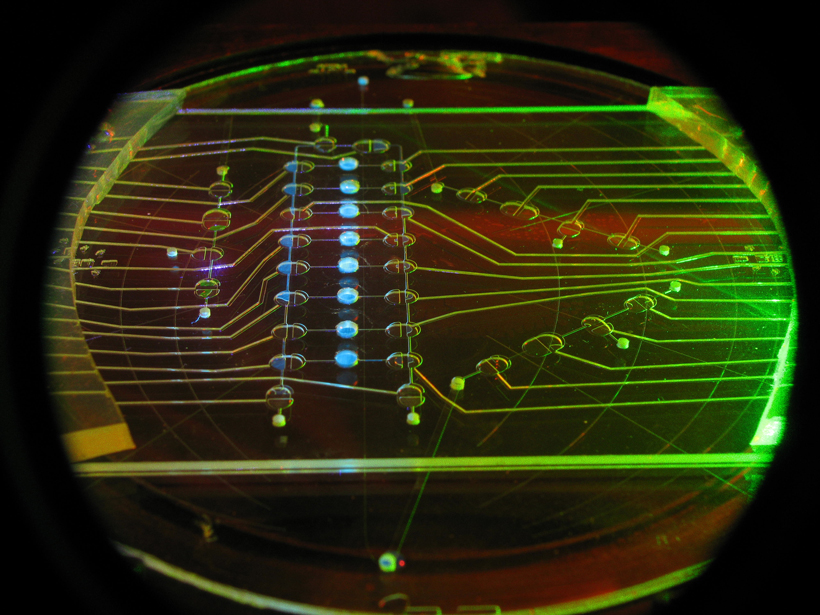The scientific knowledge gained from future planetary exploration missions will depend critically on the capabilities of instruments (cameras, spectrometers, magnetometers, thermal sensors, seismometers, remote laboratories, and other robotic tools) that acquire sensory information in lieu of human explorers. The flight opportunities available to planetary instrument developers depend on a complex interplay among mission science requirements; technology capabilities; mass, power, and volume constraints; planetary geometries; and funding availability.
Last October, more than 195 engineers, scientists, technologists, and program managers, representing 12 countries, met in California for the third workshop in a series that began in 2012 at the Goddard Space Flight Center and has been held every 2 years since.
The workshop provided a forum for collaboration, team building, exchange of ideas and information, and the presentation of status reports for instruments, subsystems, and other payload-related technologies needed to address planetary science questions. Oral and poster sessions were based on 136 submitted abstracts.
Panel sessions were organized around three themes:
- perspectives on the future of planetary exploration
- bridging the gap between planetary scientists and instrument developers
- lessons learned for instrument development at various technology readiness levels (TRL 1–9)
The “perspectives” panel addressed planetary science priorities and opportunities over the next several decades for planetary instruments on missions to Mars, the Moon, Mercury, Venus, small bodies, and the outer planets. Panel participants strongly supported existing technology development programs, including NASA’s Planetary Instrument Concepts for the Advancement of Solar System Observations (PICASSO) and Maturation of Instruments for Solar System Exploration (MatISSE).
Emerging low-cost demonstration platforms can help new planetary instrument technologies mature and reduce the risk in transitioning them to larger missions.
The panel emphasized that innovative approaches enhance mission science return, but new technology development efforts must effectively address cost and technical risk concerns, provide clear advantages over currently existing capabilities, and take into account mission schedules. They agreed that emerging low-cost demonstration platforms (e.g., planetary CubeSats and SmallSats) provide invaluable opportunities to help new planetary instrument technologies mature and reduce the development risk in transitioning them to larger missions.
The “bridging the gap” panel emphasized the importance of scientists, technologists, and engineers connecting at meetings. These groups must be willing to consider partnerships with private industry, learn new roles, and become fluent in disciplines outside of their formal training.
Instrument development teams at all stages should include scientists (to provide the “why”) and engineers (to provide the “how”) on instruments and missions.
The panel on “lessons learned” covered past instrument development efforts for technology readiness levels (TRLs) from stage 1 (conceptual) to 9 (flight proven). These lessons included the importance of development teams beginning to think early in the development process (TRLs 3–5) about planetary protection considerations, environmental and operational constraints, systems engineering, and data analysis and operational constraints. Instrument development teams at all TRL stages should include scientists (to provide the “why”) and engineers (to provide the “how”) on instruments and missions.
The panels also highlighted the value of strong teams with a mixture of backgrounds in science, technology, management, components design, and experience with working on various types of teams. Mentoring programs are vital to passing this knowledge along to early-career scientists. Finally, the panels noted that instrument development is becoming more international; thus, researchers must learn to function within one another’s cultures.
End-of-workshop feedback mentioned the difficulty in getting scientists and instrument engineers together at the traditional conferences and recommended that the community should seek ways to expand networking opportunities. For example, instrument talks could be incorporated into the annual Lunar and Planetary Science Conference.
More details on the presentations are available in the workshop abstracts. The workshop also produced an open-source online instrument database to facilitate ongoing input from developers.
The workshop was sponsored by the Lunar and Planetary Institute. The next workshop in this series is tentatively scheduled to take place in Berlin, Germany, in the fall of 2018.
—Sabrina M. Feldman, David Beaty, and James W. Ashley (email: [email protected]), Jet Propulsion Laboratory, California Institute of Technology, Pasadena
Citation:
Feldman, S. M.,Beaty, D., and Ashley, J. W. (2017), Instrument development enables planetary exploration, Eos, 98, https://doi.org/10.1029/2017EO074873. Published on 08 June 2017.
Text © 2017. The authors. CC BY 3.0
Except where otherwise noted, images are subject to copyright. Any reuse without express permission from the copyright owner is prohibited.

